Most people fall into one of two categories when it comes to device security. On one hand, many believe they are not interesting enough to be targeted by online attackers and thus do not take sensible precautions, such as making sure every website account is protected with a strong, unique password. (And since most cyber attacks today are done by bots, whether you are interesting or not is irrelevant.) On the other hand, some people have misplaced concerns about the security of stored data and thus refuse to use a password manager or biometric authentication.
Another, very small third group exists: those who, because of who they are or what they do, have a legitimate reason to worry about being targeted by sophisticated digital attacks. Such people might include human rights activists, political dissidents, journalists covering organized crime or government corruption, senior executives in controversial business fields, high-profile government officials, and government employees with access to sensitive information.
For such people, using a password manager and relying on biometric authentication are minimum security measures. Government intelligence and law enforcement agencies often employ hacking software like Pegasus, which can be installed on target iPhones through zero-click exploits (like simply receiving a malicious text message). Pegasus can then read text messages, hear calls, collect passwords, track location, access the camera and microphone, and harvest information from apps.
Government agencies and organized crime rings alike employ hackers to pursue high-profile targets directly, often through social engineering (pretending to be someone they’re not to gain access to an account or a device). Apple is aware of the risk to high-value individuals, and in November 2021, the company filed a lawsuit against the maker of Pegasus, NSO Group.
More practically, Apple introduced Lockdown Mode in iOS 16, iPadOS 16, and macOS 13 Ventura. Lockdown Mode significantly reduces the attack surface that spyware or hackers can exploit, by limiting or blocking specific apps, websites, and features on your Apple devices:
- Messages: Most message attachment types are blocked except for certain images, video, and audio. Links and link previews are blocked as well.
- Web browsing: Safari blocks complex web technologies, potentially causing some websites to load slowly or not operate correctly. It may also block web fonts and images, so sites may not display as designed.
- FaceTime: Incoming FaceTime calls are blocked unless you have previously called that person.
- Apple services: Invitations to Apple services (such as joining the Home app) are blocked unless you have previously invited that person.
- Shared albums: Shared albums disappear from the Photos app, and shared album invitations are blocked.
- Device connections: To connect an iPhone or iPad to a computer or accessory, the device must first be unlocked. Similarly, connecting an M-series Mac laptop to an accessory requires explicit approval.
- Configuration profiles: Devices cannot be enrolled in Mobile Device Management, and configuration profiles cannot be installed.
If you are a sufficiently high-value target, the inconveniences created by these restrictions are worth the protection that Lockdown Mode provides. But for the vast majority of Apple users, Lockdown Mode’s limitations will cause confusion or annoyance.
Turning on Lockdown Mode
Lockdown Mode must be enabled on each of your devices separately. On an iPhone or iPad, go to Settings > Privacy & Security > Lockdown Mode, and then tap Turn On Lockdown Mode on two separate screens. For the last step, tap Turn On & Restart, and enter your passcode.
Once your iPhone restarts, it will work mostly the way you expect, apart from the above limitations. When an app has been limited in some way, you may see notifications, and a banner appears in Safari to remind you that you are in Lockdown Mode.
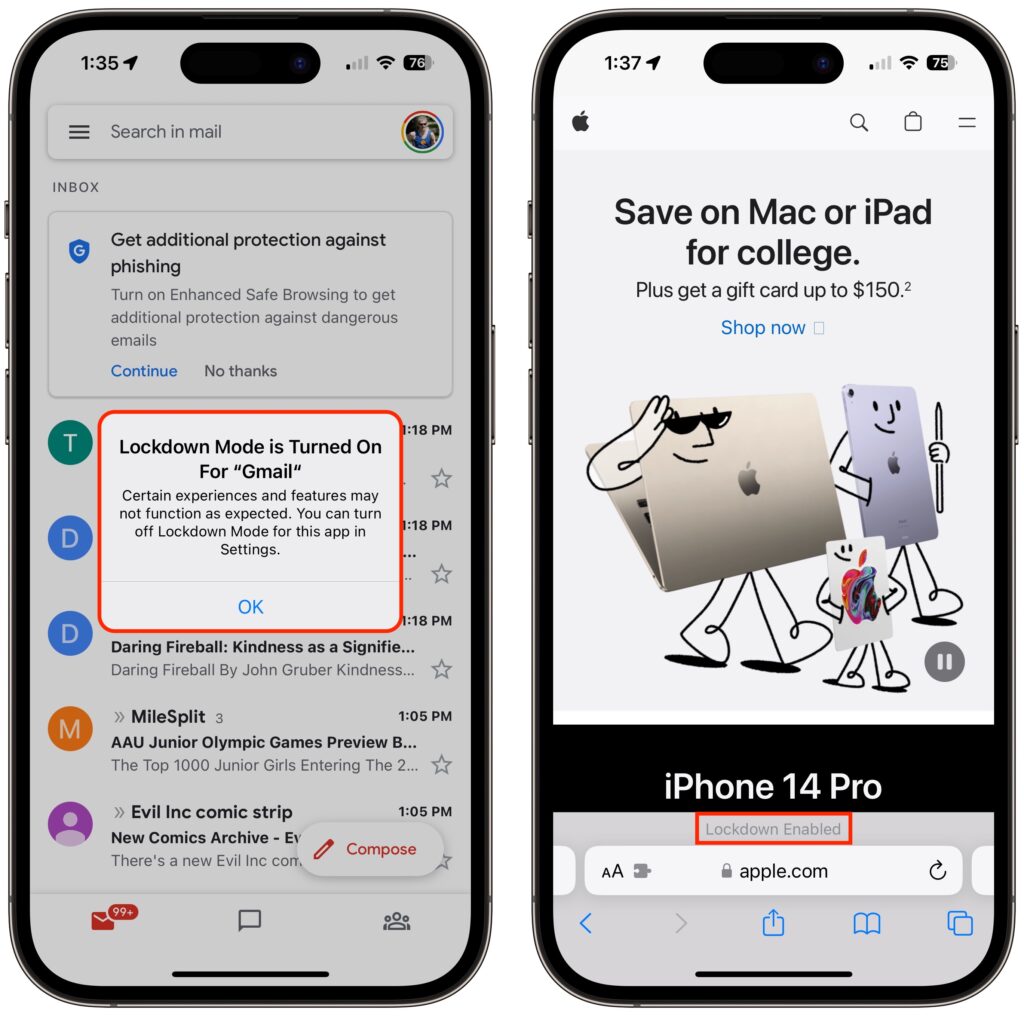
On a Mac, turn on Lockdown Mode by going to System Settings > Privacy & Security. Scroll down to Lockdown Mode and click Turn On. Then Authenticate, and click Turn On & Restart. As with the iPhone and iPad, a Safari banner will remind you Lockdown Mode is on, and you may receive notifications when an app or feature is limited.
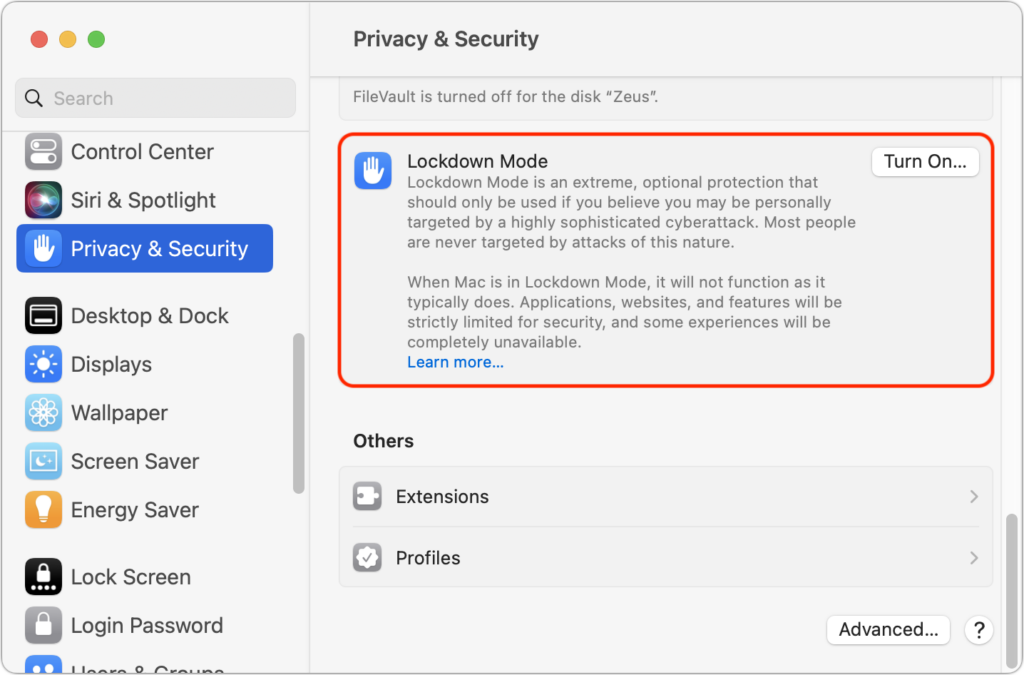
Allow Certain Apps or Websites in Lockdown Mode
If you discover that a particular app or website is not operating correctly in Lockdown Mode, you can exclude it from Lockdown Mode’s protections; you will have to decide if it is worth the added risk.
- To manage exceptions on the iPhone or iPad, go to Settings > Privacy & Security > Lockdown Mode. Then scroll to the bottom, tap Configure Web Browsing, and on the next screen, turn off the switch for the desired app.
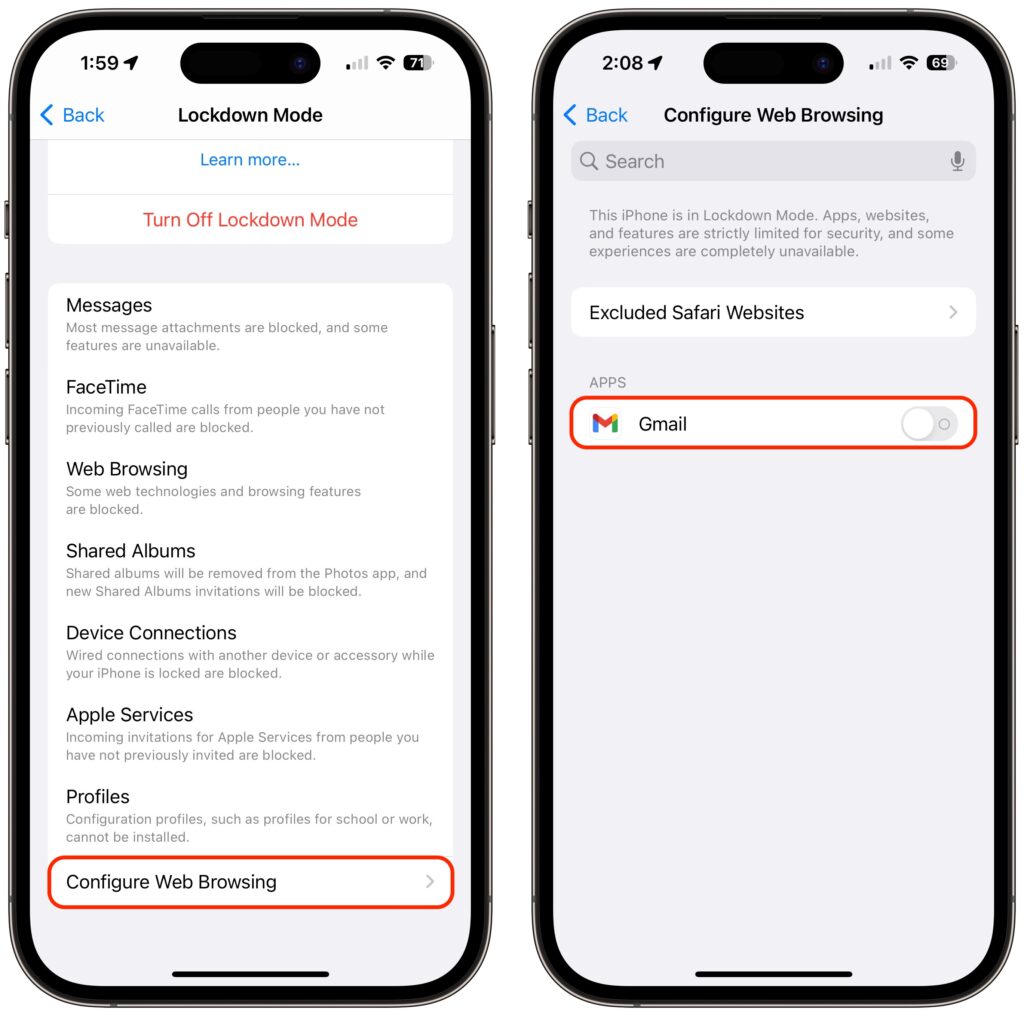
To exclude websites from Lockdown Mode, use Safari. Tap the AA button in the address bar, disable the Lockdown Mode switch, and tap Turn Off. Note the Lockdown banner change to Lockdown Off so you know the website is no longer being limited for your protection.
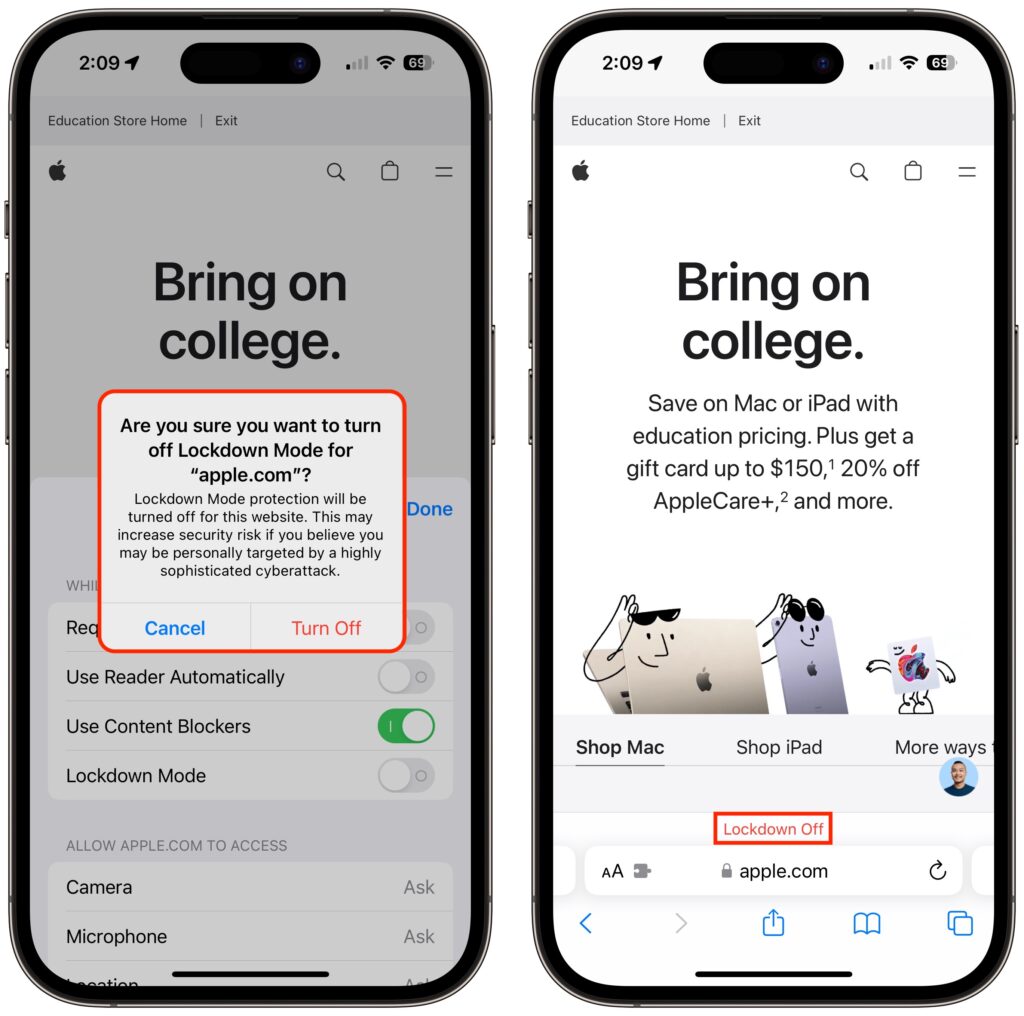
- On the Mac, you can exclude websites in Safari, but not apps. While on the site you want to exclude, choose Safari > Settings for name. In the popover that appears, deselect Enable Lockdown Mode, and then click Turn Off when prompted.
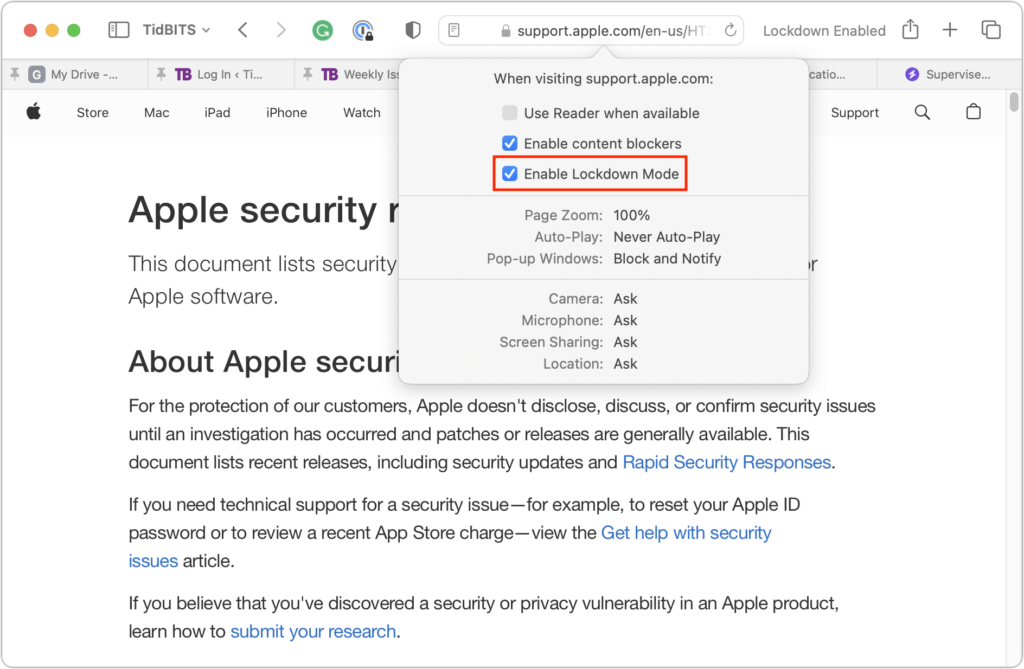
Few individuals need the extra insurance provided by Lockdown Mode. But if you qualify as a high-value target, enabling Lockdown Mode certainly reduces the chances that powerful forces will be able to compromise your iPhone, iPad, or Mac.
(Featured image based on originals by iStock.com/Tero Vesalainen and matias giamportone)
